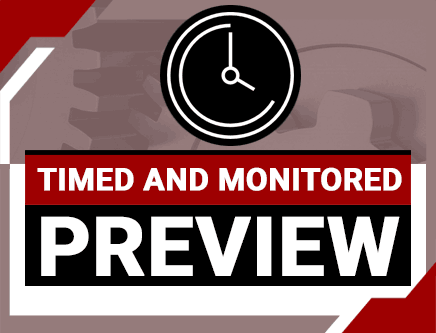Design of Potable Water Plumbing Systems (Ohio T&M)
In Design of Potable Water Plumbing Systems, you'll learn ...
- Understand the factors influencing the potable water demand
- Learn the model plumbing codes applicable to potable water plumbing systems
- Learn the Hunter’s method for approximating peak demand loadings on a building’s water distribution system
- Describe the terms maximum flow, average flow, maximum probable flow, continuous demand and intermittent demand
Overview

To meet the Ohio Board's intent that online courses be "paced" by the provider, a timer will be used to record your study time. You will be unable to access the quiz until the required study time of 200 minutes has been met.
Credit: 4 PDH
Length: 32 pages
Plumbing water distribution systems are designed on the idea of the most probable peak demand loading, which reflects the worst-case scenario for a system. These types of systems require different considerations than large-scale water distribution networks. The difference is primarily attributed to uncertainty regarding the use of plumbing fixtures, hence uncertainty in demand loadings.
This 4-hour course provides comprehensive design methodology and underlying principles of plumbing water systems. This course addresses the design criteria for estimating potable water demand for residential and transitory use facilities. This course is intended to provide basic information, which may be used for conceptual design in the absence of any more appropriate information.
This course is aimed at students, architects, mechanical engineers, civil engineers, facility designers, health and environment professionals, energy auditors and anyone who wants a basic understanding of plumbing systems.
Specific Knowledge or Skill Obtained
This course teaches the following specific knowledge and skills:
- Understand the factors influencing the potable water demand
- Learn the model plumbing codes applicable to potable water plumbing systems
- Learn the Hunter’s method for approximating peak demand loadings on a building’s water distribution system
- Describe the terms maximum flow, average flow, maximum probable flow, continuous demand and intermittent demand
- Understand the fixture unit concept to determine the rate of flow with a plumbing pipe
- Learn with example the application of Hunter’s curve and demand tables
- Learn the American Water Works Association (AWWA) “Fixture Value Method for sizing service water mains for non-residential demands
- Learn four approaches related to plumbing water pipe sizing
- Understand the advantages and disadvantages of using copper versus plastic pipe for potable water service
- Understand the method of sizing booster water pumps
Certificate of Completion
You will be able to immediately print a certificate of completion after passing a multiple-choice quiz consisting of 20 questions. PDH credits are not awarded until the course is completed and quiz is passed.
| This course is applicable to professional engineers in: | ||
| Alabama (P.E.) | Alaska (P.E.) | Arkansas (P.E.) |
| Delaware (P.E.) | District of Columbia (P.E.) | Florida (P.E. Area of Practice) |
| Georgia (P.E.) | Idaho (P.E.) | Illinois (P.E.) |
| Illinois (S.E.) | Indiana (P.E.) | Iowa (P.E.) |
| Kansas (P.E.) | Kentucky (P.E.) | Louisiana (P.E.) |
| Maine (P.E.) | Maryland (P.E.) | Michigan (P.E.) |
| Minnesota (P.E.) | Mississippi (P.E.) | Missouri (P.E.) |
| Montana (P.E.) | Nebraska (P.E.) | Nevada (P.E.) |
| New Hampshire (P.E.) | New Jersey (P.E.) | New Mexico (P.E.) |
| New York (P.E.) | North Carolina (P.E.) | North Dakota (P.E.) |
| Ohio (P.E. Self-Paced) | Ohio (P.E. Timed & Monitored) | Oklahoma (P.E.) |
| Oregon (P.E.) | Pennsylvania (P.E.) | South Carolina (P.E.) |
| South Dakota (P.E.) | Tennessee (P.E.) | Texas (P.E.) |
| Utah (P.E.) | Vermont (P.E.) | Virginia (P.E.) |
| West Virginia (P.E.) | Wisconsin (P.E.) | Wyoming (P.E.) |


 Live support chat
Live support chat



